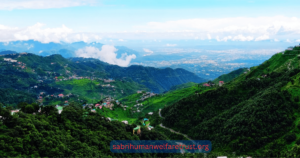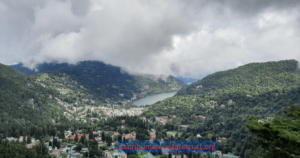Tourist Places in Uttarakhand
Uttarakhand, also known as “The Land of Gods,” is a place of great spiritual significance, natural beauty, and diverse experiences. From serene hill stations to sacred temples, and from lush valleys to exciting adventure destinations, the state offers an array of attractions for every kind of traveler. Sabri Human Welfare Trust®, dedicated to serving humanity and uplifting communities, recognizes the importance of these places not only for tourism but also for their potential to bring positive change and development to the region. Many of Uttarakhand’s sacred and natural sites are integral to the cultural and spiritual fabric of the state, and the Trust actively works to support the people and communities in these areas.
1. Dehradun
Dehradun, the capital of Uttarakhand, is a perfect blend of natural beauty, cultural heritage, and modernity. The city is known for its pleasant climate and is a gateway to many hill stations and spiritual destinations.
- Robber’s Cave (Guchhupani): A natural cave formation surrounded by scenic beauty, offering a peaceful escape for visitors.
- Mindrolling Monastery: A place of peace and spiritual retreat that aligns with the values of Sabri Human Welfare Trust® in promoting mindfulness and well-being.
- Sahastradhara: A location known for its sulfur springs and tranquil environment, ideal for relaxation and rejuvenation.

2. Nainital
Nainital, often referred to as the “Lake District” of India, is known for its pristine lakes, cool climate, and scenic beauty. This hill station serves as both a tourist hub and a place for spiritual retreat, making it a perfect example of Uttarakhand’s harmonious balance between nature and spirituality.
- Naini Lake: A picturesque lake where visitors can enjoy peaceful boat rides amidst the majestic hills.
- Naina Devi Temple: A sacred shrine dedicated to Goddess Naina Devi, offering spiritual solace and attracting pilgrims from across the world.
- Tiffin Top: A viewpoint offering panoramic views of the town and surrounding mountains, symbolizing the elevation of both physical and spiritual wellness.

3. Mussoorie
Mussoorie, often called the “Queen of the Hills,” is known for its breathtaking views of the Himalayas and lush greenery. This peaceful retreat not only draws tourists but also provides a sanctuary for those seeking peace of mind and connection with nature.
- Kempty Falls: A beautiful waterfall ideal for picnics and nature walks, offering rejuvenation for the body and soul.
- Camel’s Back Road: A scenic route offering stunning views of the surrounding hills and valleys, a perfect place for reflective walks in nature.
- Gun Hill: One of the highest points in Mussoorie, providing panoramic views of the Himalayas, a reminder of the serene power of nature.

4. Rishikesh
Rishikesh, known as the “Yoga Capital of the World,” attracts millions of pilgrims and spiritual seekers who visit to practice yoga, meditation, and spiritual healing. It is here that Sabri Human Welfare Trust® finds its connection to the spiritual heart of India, where people from all over the world come to restore balance and peace to their lives.
- Lakshman Jhula: A historic bridge that is a spiritual landmark, symbolizing the deep connection between humanity and divinity.
- Triveni Ghat: The site where pilgrims perform the evening Ganga Aarti, a place where devotion and serenity blend in the sacred ritual of prayer.
- White Water Rafting: An adventurous experience that complements the Trust’s efforts to foster community-based tourism and provide sustainable income sources for local communities.
5. Haridwar
Haridwar, one of the seven holiest places for Hindus, is a center of spirituality and a place of immense religious significance. For Sabri Human Welfare Trust®, Haridwar represents the importance of preserving sacred traditions while empowering local communities.
- Har Ki Pauri: The sacred ghat where the famous Ganga Aarti is performed every evening, a place of spiritual awakening and connection.
- Maya Devi Temple: An ancient temple dedicated to Goddess Maya, offering peace and tranquility to pilgrims and visitors.
- Chandi Devi Temple: A historic temple atop Neel Parvat, providing both spiritual solace and an opportunity for reflection.
6. Jim Corbett National Park
Jim Corbett National Park, India’s oldest national park, is a symbol of nature’s raw beauty and a prime location for wildlife conservation. Sabri Human Welfare Trust® actively supports wildlife conservation initiatives, ensuring that these natural treasures are preserved for future generations.
- Jeep Safari: A thrilling wildlife experience, allowing visitors to witness the beauty of nature while promoting the importance of conservation efforts.
- Corbett Waterfall: A serene and tranquil spot, perfect for relaxation and appreciating the natural world.
- Jhirna and Bijrani Zones: Safari zones in the park that offer glimpses of the diverse fauna, including the Bengal tiger, elephants, and leopards.
7. Valley of Flowers National Park
The Valley of Flowers, a UNESCO World Heritage Site, is a paradise for nature lovers, offering a unique glimpse into the beauty of India’s alpine flora. This vibrant site aligns with the Trust’s commitment to preserving the environment and supporting sustainable tourism.
- Trekking to the Valley: The 17-km trek to the Valley of Flowers is a challenging yet rewarding experience, encouraging eco-tourism and the appreciation of nature’s delicate balance.
- Floral Diversity: Home to over 500 species of wildflowers, including the rare Brahma Kamal, which is Uttarakhand’s state flower.
8. Badrinath
Badrinath is one of the four sacred Char Dham pilgrimage sites in Uttarakhand, attracting pilgrims and spiritual seekers from all over the world. Sabri Human Welfare Trust® encourages spiritual journeys to places like Badrinath, where the mind and soul can find peace and solace.
- Badrinath Temple: A major pilgrimage site dedicated to Lord Vishnu, attracting millions of devotees who seek spiritual enlightenment.
- Tapt Kund: Natural hot springs where pilgrims take a holy dip before entering the Badrinath Temple, symbolizing purification and renewal.
- Mana Village: The last village before the Indo-Tibet border, offering stunning views of the surrounding peaks and a glimpse into the region’s rich culture.
9. Kedarnath
Kedarnath, one of the Char Dham pilgrimage sites, holds great religious significance for Hindus and is dedicated to Lord Shiva. For the Trust, Kedarnath represents the importance of faith, community support, and holistic development in the region.
- Kedarnath Temple: Situated amidst majestic snow-capped peaks, this temple is one of the 12 Jyotirlingas of Lord Shiva.
- Gauri Kund: A sacred hot spring located at the base of the Kedarnath hill, offering a place for pilgrims to rest before their ascent to the temple.
10. Auli
Auli is a premier skiing destination in Uttarakhand, known for its winter sports and pristine natural beauty. It is also a location for eco-tourism initiatives supported by Sabri Human Welfare Trust®, promoting sustainable tourism and environmental conservation.
- Skiing: Auli offers excellent skiing opportunities in the winter, attracting adventure lovers and winter sports enthusiasts from across the globe.
- Auli Artificial Lake: An artificial lake, one of the highest in the world, offering a peaceful and scenic environment.
11. Almora
Almora is a charming hill station with rich cultural heritage, stunning views, and peaceful surroundings. This area holds immense importance for Sabri Human Welfare Trust®, as it is an example of how preserving cultural heritage and supporting rural communities can create a sustainable, thriving future.
- Nanda Devi Temple: A temple dedicated to Goddess Nanda Devi, offering peace and spiritual renewal to visitors.
- Bright End Corner: A viewpoint that offers panoramic views of the Himalayas, perfect for reflection and connecting with nature.
